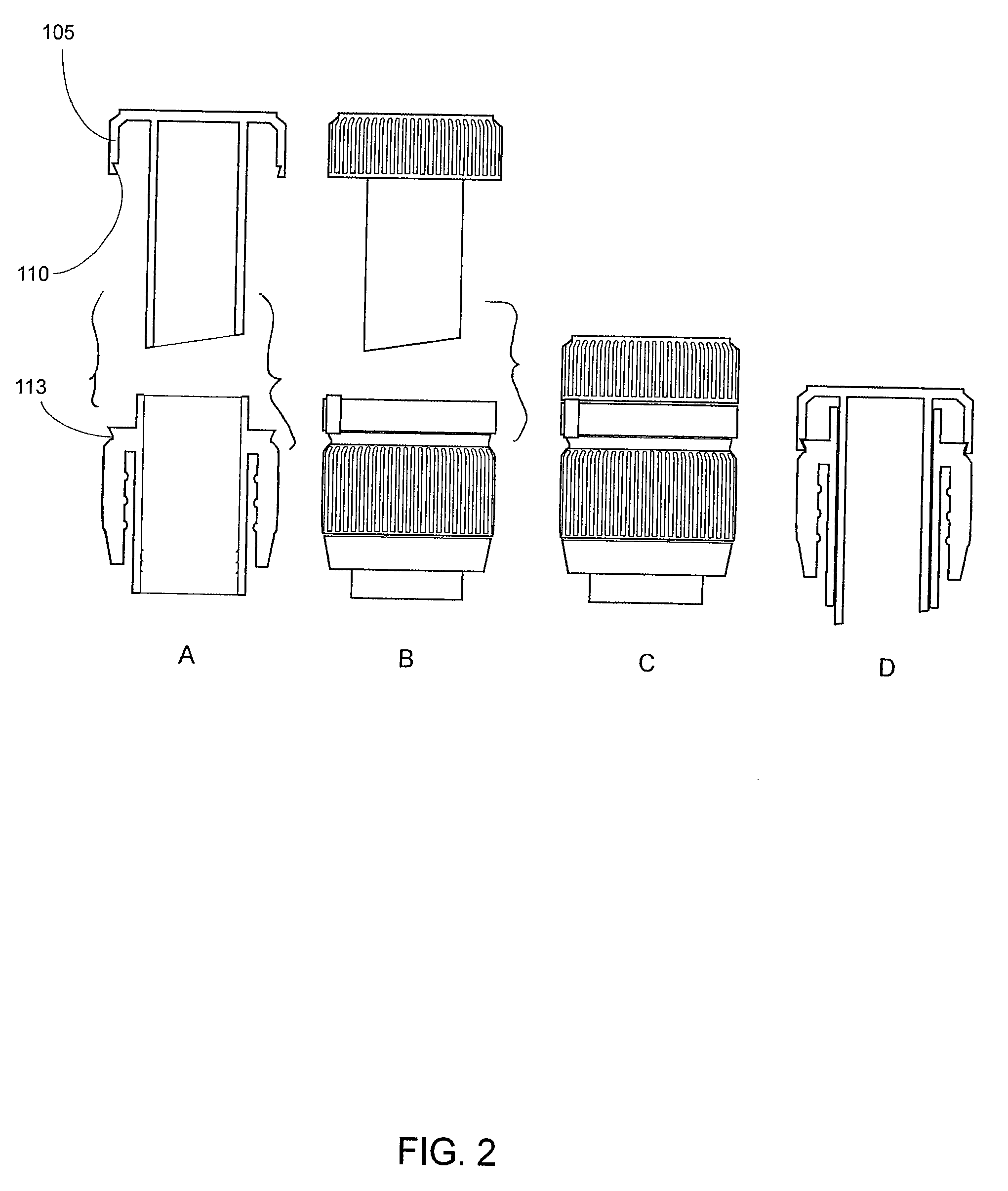Such mixing is impractical with common plastic water bottles, as it is difficult to introduce a
powder through a narrow opening.
It may be easier to do this in the home (with the use of a small funnel), however, but it is quite difficult when traveling or during outdoor activities such as hiking.
It is also easy to incorrectly measure the amount of water or drink mix and thus create a beverage that is either too concentrated or diluted.
This causes additional
raw material expenses for beverage producers, significantly shortens beverage
shelf life, and leaves consumers uncertain of the
potency or nutritional value of such beverages.
Various means have been described in the art, however each suffers from one or more undesirable aspects, all of which the instant device has been designed in an attempt to overcome.
A first deficiency in the art is that such caps often comprise reservoirs of such shapes which comprise barriers or cavities which block the flow of additives into the bottle, resulting in waste and additional effort by the
consumer to utilize all of the components of the beverage.
It is further possible that some of the additives or the fluid can remain in the cap
after discharge, thus resulting in a beverage that is too weak, or in the case of medication or nutrients, the incorrect
dose or strength.
A second deficiency in the art is that such caps generally comprise separate reservoir compartments, thus requiring additional costs and materials for product.
A third deficiency in the art is that such caps generally comprise
cutting or piercing devices which are of a complicated structure or operation.
This increases the cost of production of the cap, and in some cases, the
cutting or piercing devices are dangerously sharp.
A fourth deficiency in the art is that such caps generally comprise insufficient or non-existent tamper resistant features, exposing the beverage additive and / or fluid to tampering.
A fifth deficiency in the art is that such caps often comprise excessively large tamper resistant features which require substantially more materials to produce.
This increases the amount of
waste product and increases the costs of production.
A sixth deficiency in the art is that such caps often comprise insufficient mechanisms for preventing the premature release of contents of reservoir into the beverage, thus increasing the risk of prematurely adding the beverage additives to the fluid in the bottle.
A seventh deficiency in the art is that such caps often comprise large mechanisms for preventing premature release, increasing the bulk and cost of production of the cap.
An eighth deficiency in the art is that such caps generally comprise missing or inadequate systems for preventing water from leaking out through the cap when agitated, such as through transport, shaking or inadvertent mixing;
A ninth deficiency in the art is that such caps generally comprise more than two component pieces for the cap, which significantly increases the complexity and cost of producing, assembling, and using the
bottle cap.
A tenth deficiency in the art is that such caps generally comprise a separate reservoir which must be pierced, which renders the cap design more complicated (and thus more expensive to build and assemble).
An eleventh deficiency in the art is that such caps generally are not intended to be capped when bottled, thus not available for long term storage / transport, requiring separate purchase and transport, and thus cannot be placed on bottle long term.
A twelfth deficiency in the art is that such caps generally comprise parts of the
bottle cap mechanism which are designed to fall into the fluid, creating a
choking and safety
hazard as the beverage is consumed.
A thirteenth deficiency in the art is that such caps often require significant physical effort (e.g., strength or a mechanical device such as a bottle opener) to remove the cap.
A fourteenth deficiency in the art is that such caps generally do not comprise a seal between cap and bottle, thus providing a beverage which is easier to tamper with or otherwise adulterate.
A fifteenth deficiency in the art is that such caps generally comprise
plunger / piercing mechanism which must break through a difficult seal, requiring significant force by the user to release the contents of the cap into the fluid container.
This is unsuitable for weaker individuals such as children or the elderly.
The lock seal of the cap described in the instant writing makes it almost impossible to engage the
plunger without removing the lock seal.
 Login to View More
Login to View More 


